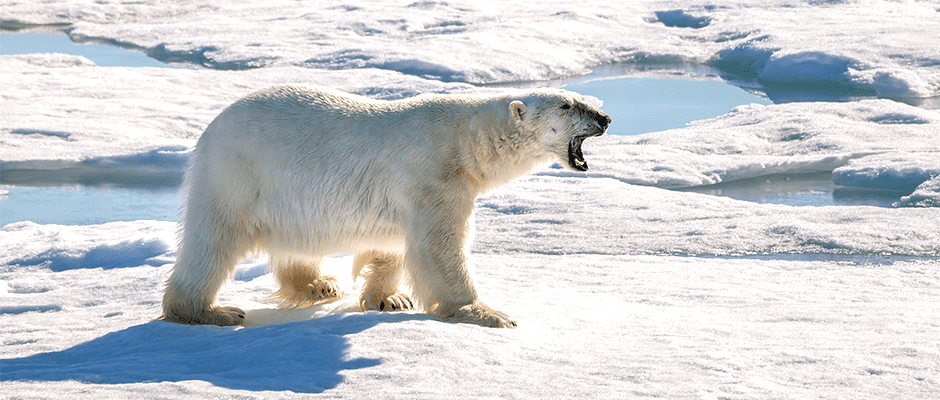Share this article
Previously unknown contaminants found in polar bears
It’s hard to look for something when you don’t know what you’re looking for.
That is what researchers faced when they tried to find contaminants in polar bear (Ursus maritimus) blood. But recent advancements have allowed a team of environmental chemists and wildlife biologists to uncover the presence of contaminants that were previously unknown.
Using high-resolution mass spectrometry techniques, they have found chlorinated and fluorinated substances in polar bear blood that have gone undetected for decades. The contaminants have not declined over the years, researchers found, and some have been on the rise.
In the study published in Angewandte Chemie, Jonathan Martin, a professor of environmental chemistry and toxicology at Stockholm University, and his colleagues collected blood serum and used a new method to look for previously unrecognized contaminants. Any substances that were chlorinated or fluorinated could be flagged by their new methods.
That included novel metabolites of PCBs, or polychlorinated biphenyls. Already known to be a problem for the bears, they are still showing up in polar bears’ blood, even though they were banned in the 1980s, Martin said.
Examining blood from two polar bear subpopulations, one from the Hudson Bay and one from the Beaufort Sea in the northern Arctic, the team also detected four classes of fluorinated substances that hadn’t been detected in polar bears before. The researchers then went into polar bear serum archives collected by the Canadian government since 1985 to test for the same substances. They found that all the fluorinated substances had been increasing in the polar bears over time.
“It’s amazing how chemicals go undetected for so long,” Martin said.
They found one class of perfluoroalkyl sulfonic acids, or PFSAs, has been increasing in polar bear blood since 1984, especially in the Beaufort Sea bears, closer to Chinese industry, which may still use these chemicals, including some thought to have adverse reproductive and developmental effects.
It can take a while for substances to show up in the Arctic — even decades —allowing increasing exposure to the bears even after they’ve been banned, Martin said. “These fluorinated chemicals move slowly in ocean currents,” he said, and easily bioaccumulate in food webs once they reach the Arctic.
The team doesn’t yet know how these compounds may affect polar bears, but their presence indicates they’re likely throughout the region’s food web. “The polar bear is the top predator in the Arctic,” Martin said. “When you find a contaminant in Arctic predators, it indicates to you that the chemical is also widespread in the Arctic marine food web.”
Header Image: Researchers recently discovered previously unknown contaminants in polar bear blood. ©Andreas Weith








